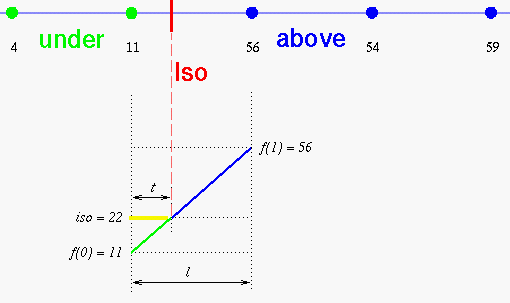Voxels representation & Marching
Cubes Algorithm
Definition: A voxel is a volume element, typically a cubic cell. 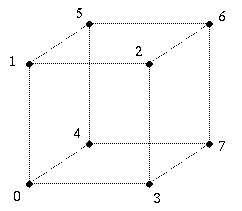
The concept of isosurface
Potential function on voxels
The space being discretized, let every vertex of voxel have some
numerical value (3D field of values) that we will call a potential.
As an example, consider in 2D a point, and for every vertex the distance
to this point. Then a curve of constant potential
(isocurve) is a circle.
This isosurface defines two regions: green vertices have a value under
the threshold (potential of the isosurface), the others above.
Linear interpolation for the isosurface location
Keeping only voxels that are fully inside (8 vertices) produce a jagged
surface. The idea of the marching cubes algorithm is to slice the voxels
intersecting with the isosurface. For that purpose, let us examine a 1D
case.
The vertices are the green and blue points on top. We expect the isosurface
to be around the red line by linear interpolation.
How do we achieve this in 3D?
Marching cubes algorithm
Description and implementation details J.
Sharman, D.
Harvey.
Every vertex of the voxel can be either under or above the threshold.
There are 8 vertices for a cube, so we get 28 = 256 possibilities.
However to simplify the algorithm we can reduce the complexity by taking
into account cell combinations that duplicate under the following conditions.
-
Rotation by any degree over any of the 3 primary axis
-
Mirroring the shape across any of the 3 primary axis
-
Inverting the state of all corners and flipping the normals of the relating
polygons.
Taking this into account we can resolve the original 256 combinations of
cell state down to a total of 15 combinations (see below). The blue spheres
denote corners that have been tested as inside the shape and the green
arrows denote the surface normals of the relevant triangles.
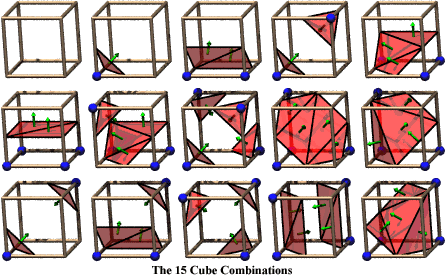
Another
representation of the combinations
Original paper: "Marching Cubes: A High Resolution 3D Surface Construction
Algorithm", William E. Lorensen and Harvey E. Cline,
Computer Graphics (Proceedings of SIGGRAPH '87), Vol. 21, No. 4, pp.
163-169.
Improved Marching cubes for solving holes pb
Ambiguity which creates troubles with holes for instance.
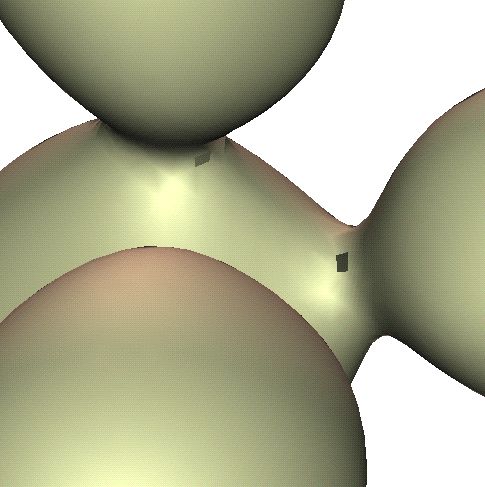
Consequently we have to consider 8 additional cases
Final smoothing
Due to the tradeoff computation time / resolution, the extracted surface
has often to be smoothed:
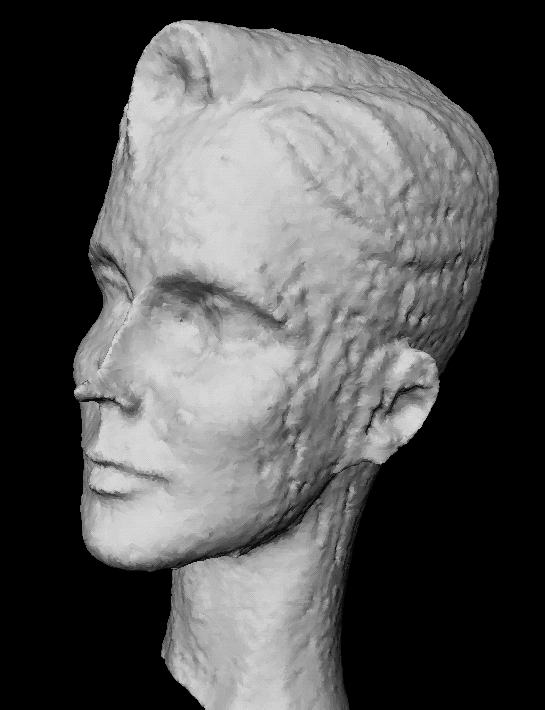
What potential can we define at
voxels vertices?
Density
Image of RNA granules inside oligodendrocyte using the Marching Cubes Algorithm

Distance to the surface...
...for a triangulated mesh (scanned object). Then look for threshold zero.


Thanks to Hans for his fantastic results: http://graphics.lcs.mit.edu/~hkp/
Further reading : Bloomenthal, Introduction to Implicit Surfaces,
Morgan Kaufmann, 1997.
Eric Amram, Feb 1998, MIT 6.838 Advanced Topics in Computer
Graphics - Prof. Seth Teller.



